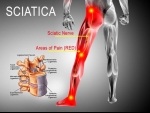Home » Blog
| Stem Cell, PRP, Acupuncture in Queens & Long Island, New York
Blog | Stem Cell, PRP, Acupuncture in Queens & Long Island, New York
Sciatica is often treated with self-care techniques, such as over-the-counter medication, heat and ice therapy, and/or at-home stretches and exercises. While these treatments may help relieve your sciatica pain, sometimes the pain may recur or even progress over time. Read on to learn about the common factors that can affect your sciatica treatment plan and the importance of getting an accurate diagnosis for the cause of your sciatica.
Read more
It’s been long known among the medical community that among the most common causes of pain are trigger points, also known as myofascitis or myofascial pain syndrome. Unfortunately, it’s also the most ignored health issue that doesn’t get much attention. Even though physicians and expert chiropractors are aware of trigger points, in theory, very few of them know how to identify, locate, and treat them.
Read more
A look back through time to see the evolution of our understanding of pain. To understand current pain theories and perspectives, let’s take a look at where it all began. As with so many things in life, you can’t really understand where you are unless you know where you’ve been.
Read more
A slipped disc refers to an intervertebral disc of the spine that has lost its normal shape and/or consistency. The altered shape occurs when the disc’s soft inner material (nucleus pulposus) bulges or leaks out of its external fibrous covering (annulus fibrosus). Several medical terms, such as herniated, ruptured, torn, bulged, or protruding disc may be used interchangeably with a slipped disc.
Read more
The underlying theory behind PRP or platelet-rich plasma therapy treatments is derived from the body naturally healing itself. The body’s first line of defense when injured is to send platelets to the tissue or target area. Platelets promote healing which is exactly what PRP therapy injections can do.
Read more
How Is It Diagnosed? A fibromyalgia diagnosis is a journey; it takes time and medical professionals will go through a process of tests, eliminating other causes for the pain, and monitoring symptoms. Fibromyalgia symptoms often mirror that of other disorders, so it takes time to rule out alternative causes. Often a doctor will refer patients to a specialist who will ensure that the right diagnosis is given.
Read more
Yoga can help strengthen and stabilize your core muscles, increase flexibility in your hip and spine, and reduce lower back pain and sciatica. While yoga can be complex and difficult to perform, here are 4 easy and effective yoga stretches that you can do at home using a yoga mat or a thick towel: 1. Knees-To-Chest Pose - The knees-to-chest pose4 helps stretch out the muscles in your lower back and your piriformis, a pear-shaped muscle located deep in the buttock.
Read more
Regenerative treatments like platelet-rich plasma (PRP) therapy are rising in popularity. They are not only helping people who are suffering from hair loss but are also providing relief to individuals who are living with constant joint pain. An extremely common condition, joint pain can be debilitating for both men and women.
Read more
It’s scary being diagnosed with Fibromyalgia. But with smart and careful management, Fibromyalgia need not hold you back in life.
What Is Fibromyalgia? Fibromyalgia is a chronic disorder that causes widespread pain, along with fatigue and a variety of other symptoms. It is sometimes called fibromyalgia syndrome (FMS). It’s a condition that is not well understood but is being researched more all the time; more answers are coming to the forefront and with them, a better understanding of how to help fibromyalgia patients.
Read more
Tennis balls act like foam rollers and can be useful in relieving lower back pain. Massaging the lower back with tennis balls can help loosen soft tissues, release tension, relieve entrapped nerves, and improve flexibility. This blog explains the healing benefits of using tennis balls for self-massage and provides 3 unique and effective ways in which you can use tennis balls to relieve lower back and/or leg pain. As an alternative, if you require more firm pressure, a lacrosse ball can be used in the same fashion.
Read more
Love this Post? Spread the World






















